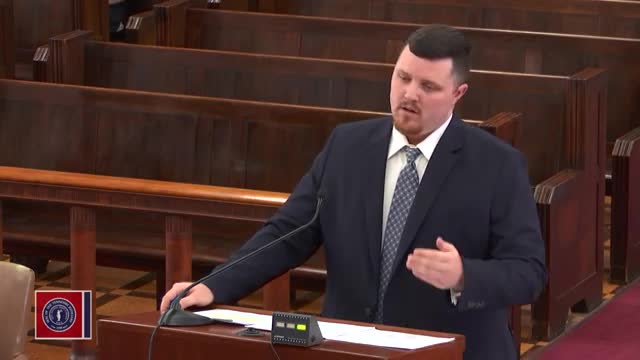Officer's testimony raises questions about legality of traffic stop
August 28, 2024 | Judicial, Tennessee
This article was created by AI summarizing key points discussed. AI makes mistakes, so for full details and context, please refer to the video of the full meeting. Please report any errors so we can fix them. Report an error »

In a recent court hearing, discussions centered around the circumstances leading to a police interaction with a driver, identified as Mister Burrell. Testimony revealed that the officer involved did not observe any illegal activity, such as speeding or traffic violations, prior to engaging with Burrell. The officer noted that he was unable to read Burrell's license plate due to the presence of other vehicles when he attempted to follow him.
The officer's account indicated that he first saw Burrell stopped at a red light before making a U-turn and parking behind Burrell's vehicle as he was about to enter a parking lot. Notably, the officer did not activate his blue lights during this initial approach. The conversation between the officer and Burrell began as the officer exited his patrol car, although there was some ambiguity regarding whether Burrell was already out of his vehicle or in the process of exiting when the officer arrived.
The court also examined the nature of the interaction, questioning whether it constituted a \"seizure\" under legal definitions. The officer's testimony suggested that he approached Burrell to inquire if everything was alright, and it was only after this engagement that Burrell mentioned having been drinking. The defense argued that the circumstances did not amount to a seizure, as Burrell was not formally detained at that moment, despite the officer's vehicle being positioned behind him.
The trial court ultimately determined that a seizure had occurred when the officer parked behind Burrell's vehicle, but deemed the officer's actions reasonable given the context of a 911 call reporting speeding. This case raises important questions about the boundaries of police interactions and the legal definitions of seizure in public encounters.
The officer's account indicated that he first saw Burrell stopped at a red light before making a U-turn and parking behind Burrell's vehicle as he was about to enter a parking lot. Notably, the officer did not activate his blue lights during this initial approach. The conversation between the officer and Burrell began as the officer exited his patrol car, although there was some ambiguity regarding whether Burrell was already out of his vehicle or in the process of exiting when the officer arrived.
The court also examined the nature of the interaction, questioning whether it constituted a \"seizure\" under legal definitions. The officer's testimony suggested that he approached Burrell to inquire if everything was alright, and it was only after this engagement that Burrell mentioned having been drinking. The defense argued that the circumstances did not amount to a seizure, as Burrell was not formally detained at that moment, despite the officer's vehicle being positioned behind him.
The trial court ultimately determined that a seizure had occurred when the officer parked behind Burrell's vehicle, but deemed the officer's actions reasonable given the context of a 911 call reporting speeding. This case raises important questions about the boundaries of police interactions and the legal definitions of seizure in public encounters.
View full meeting
This article is based on a recent meeting—watch the full video and explore the complete transcript for deeper insights into the discussion.
View full meeting
